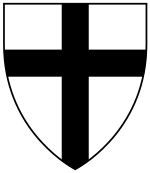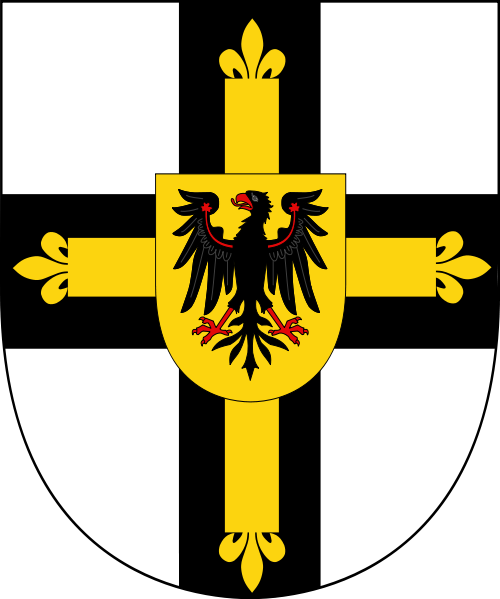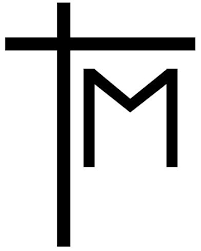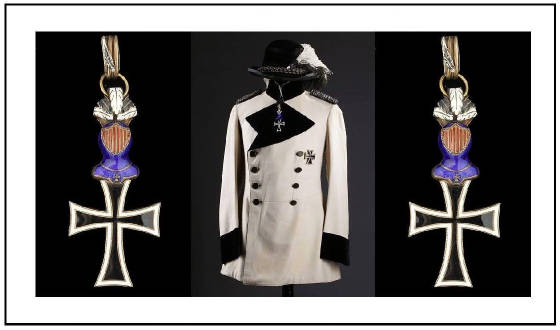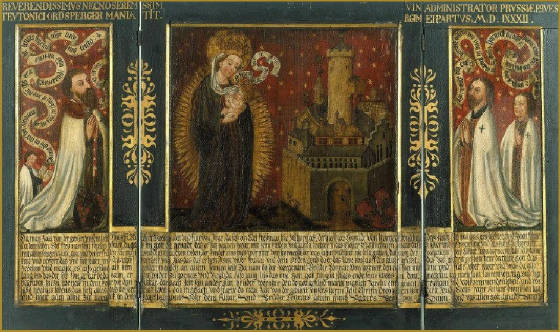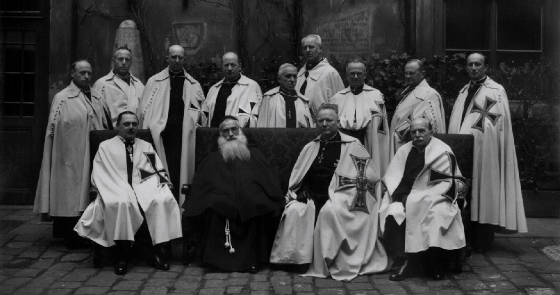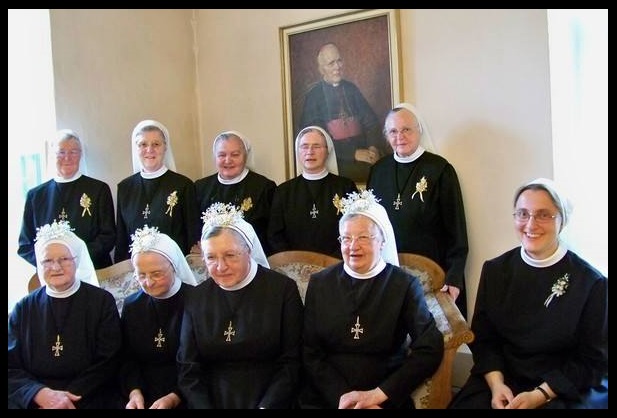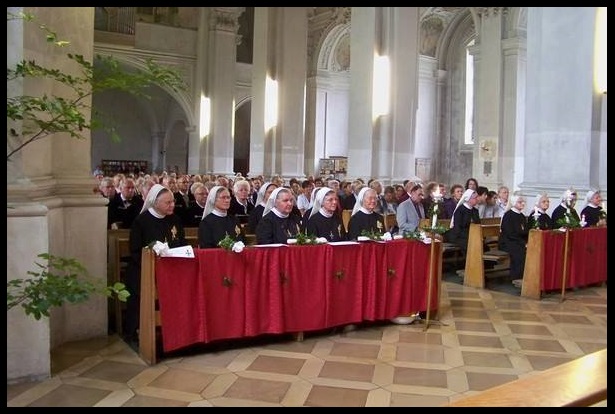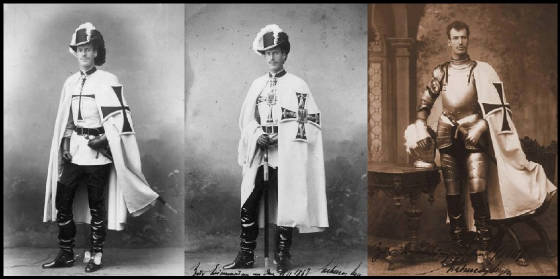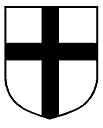 |
|
The Membership Structure of the Teutonic Order
The Military Arm of the Order The Teutonic Knight was a fully armed knight; a fully armed knight owned (and brought with him upon entering the order) full armour, arms and equipment as well as several battle chargers and a score of transport horses. A fully equipped knight was worth several villages with land, cattle, and serfs on the money side; in battle, he would be equal to a modern tank (at the time of the inception of the Teutonic Knights). Knight members could come from the nobility, the landed gentry, very rich merchant families, or the upper echelons of the ministerial class. The knights made their vows of chastity, obedience, and poverty like other monks; by canonical law, they were allowed to hold mass like any other priest-monk; in fact though, they were considered lay-men and restricted to military matters. Membership became more restrictive with the waning of knighthood as a military force. Around 1300, the Swiss halberdiers had found methods to peel a knight out of his armour like a lobster out of its shell. With that, the advantage of the fully armoured knight in battle was doomed. During the 14th century, rules for admission as a knight member changed therefore; the applicant now had to issue from the nobility and had to prove this through four generations in male and female descent.
The Ordained Brothers Ordained members are the priesthood of the order. They were responsible for the liturgy
and sacred rituals. They kept the books, wrote the annals, and did other administrative work of the order and its land. The
order's bishops were drawn from their numbers. Both the knights and the ordained priests were few in number in the order,
but they were the ones who constituted the General Chapter which elected the Grandmaster from amongst the knights, whereas
in the present day there are one hundred Priests who are ordained brothers of the Order.  The Sergeant Brothers They took the same vows as the knights and were part of the military arm of the order. They were armed by the order and usually served as light cavalry. In folklore, they also became known as knights, though their armour was lighter and their armament less formidable than the full knight's. If you see old battle accounts like the one at Morgarten, where the Swiss Confederates killed 5,000 Austrian knights in 1315, that figure includes the cavalry. Had they killed that many full knights, they'd have annihilated most of the Austrian aristocracy.
The Sisters of the Order They took the same vows as the ordained members and were full nuns under church law. They were the main workforce of the hospitals. During all the history of the order, there were always more sisters in the order than brothers (counting all three above mentioned categories together). They would receive their own motherhouse quite late in Prussia and never get a second house of their own, whereas in the present day there are two hundred Nuns who are sisters of the Order.
The Serving Half-Brothers They didn't take any vows but would stay with the order permanently and had to follow the rules of the order. They would be either armed to defend castles or serve in the hospitals (and where the two coincided, both). They were usually drawn from the local population.
The Serving Half-Sisters They joined the order under the same premises as the serving half-brothers and served in the hospitals. They were usually drawn from the local population.
The Knight Brothers on time Knights were allowed to join in the order without taking
the vows and serving an appointed time; this appointed time could be the duration of a campaign or a set number of years.
They were allowed to marry or be married, but they were constrained to leave half of their goods at their deaths as a bequest
to the order. Tannhäuser of Richard Wagner fame was such a knight brother serving his time. 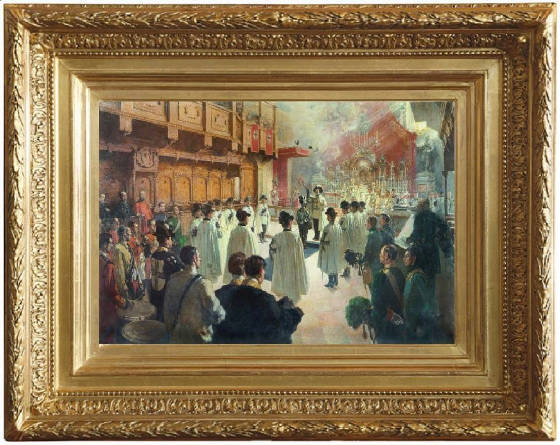 The Familiars or Honorary Members of the Order They do not join the order physically,
but help it financially and by promoting its cause. The Institute of Familiars or Marian Knights of the Order of the Brothers
of St. Mary's Hosptial in Jerusalem was modeled after the medieval monastic rules laid down in the "family " was
constructed. The Familiars or Marian also called, are connected to the Order as a spiritual form in accordance with canon
law and a public association are under the authority of the Grand Master . Its members include men and women in secular or
ecclesiastical profession who support the Order in his work and concerns and make themselves as to deserve the Marian Neck
Cross. They support the Order but also in prayer and partake in the prayers and good works of the brothers and sisters of
the Order , even after their death . The familiars will receive at the ceremony of taking the Cross of the Order and the Order
Mantle thereon . Your self-image and her work for the Order is the " status of civil union of the familiars of the Teutonic
Order Saint Mary in Jerusalem " and the "Implementing Rules for the Statute of the Apostolic familiars " regulated
and designed by the Hochmeister thereon. 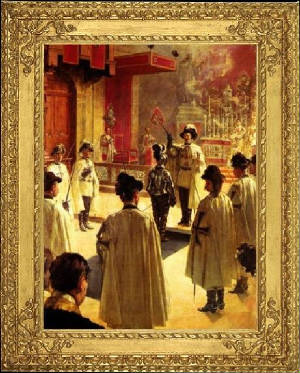 The Invited Knights of the Teutonic Order Knights from all over Europe would
make it a point of honour to participate in at least one campaign of the Teutonic Order. Knights from the Holy Roman Empire
would fight under the banner of St. George, all others under the banner of St. Mary. The expenses of Invited Knights would
be met by the order. Famous Invited Knights included King Henry IV of England, King Louis of Hungary, King Valdemar of Denmark,
and King John of Bohemia. Several noble families made a stint with the Teutonic Knights part of the upbringing of their sons,
such as the Suffolks and Warwicks. 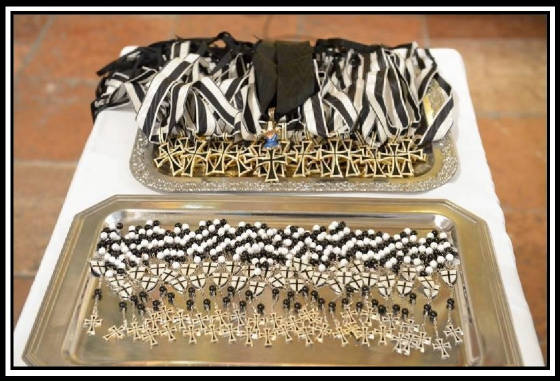 The Chivalric Teutonic Order The Teutonic Order ceased to be a Chivalric Order of Knighthood in November 1929 when His Holiness
Pope Pius XI, formally ratified the Orders new constitution making the Teutonic Order a Clerical Order, and as such Dr.Norbet
Klein held the Chivalric Grand Mastership as the 59th Hochmeister from 1923-1929, from 1929-1933 the Orders 1st Clerical
Grand Master - Hochmeister. The Teutonic Order of Saint Marys Hospital in Jerusalem - Deutscher Orden - German Order, was
formally revived back into a Chivalric Order of Knighthoood, thus making a seperate Chivalric Arm of the Teutonic Order from
the present Clerical Papal Arm of the Order in Rome, By His Imperial and Royal Highness Prince Karl Friedrich of Germany,
on Christmas Day in the year of Our Lord Two Thousand and One, by Imperial Decree. His Imperial Highness, assumed the Grand
Mastership of The Imperial Teutonic Order - Deutscher Orden, on the 1st day of Janaury, 2002, thus becoming the 60th Chivalric
Hoch-und-Deutschmeister of Teutonic Order of Saint Marys Hospital in Jerusalem - Deutscher Orden. For membership information - please contact the Office of the Hochmeister o the Teutonic Order, by email: kontakt@deutscherorden.com |
